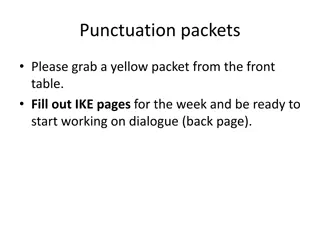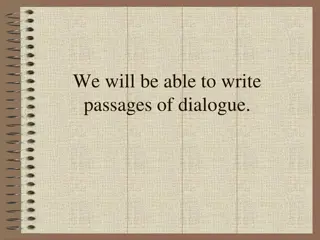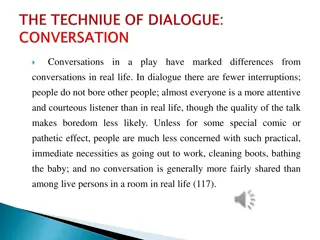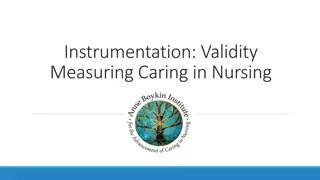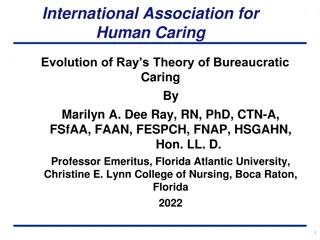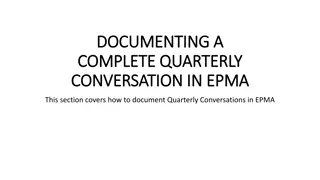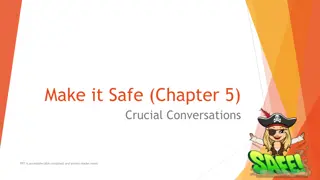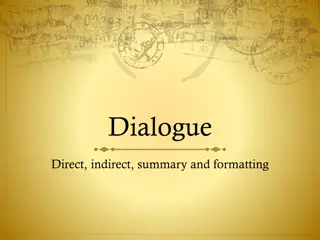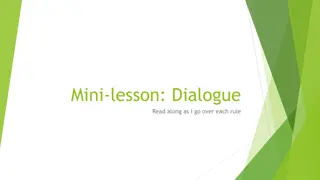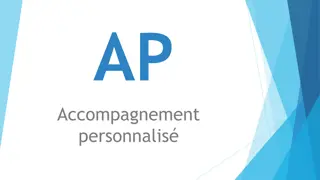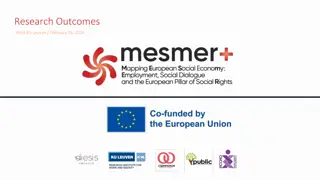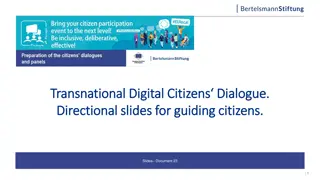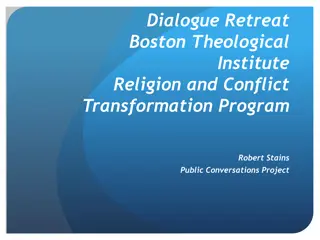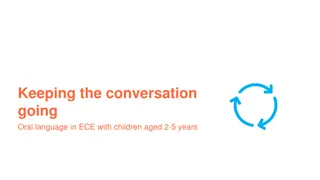Caring Conversations: Fostering Open Dialogue and Understanding
Encourage open and honest group dialogues through Caring Conversations to better understand diverse perspectives and build connections that lead to team cohesion and innovation. Guidelines ensure respectful sharing, while facilitators play a pivotal role in guiding discussions effectively. Join us in creating a safe space for dialogue rooted in our values.
Download Presentation

Please find below an Image/Link to download the presentation.
The content on the website is provided AS IS for your information and personal use only. It may not be sold, licensed, or shared on other websites without obtaining consent from the author. Download presentation by click this link. If you encounter any issues during the download, it is possible that the publisher has removed the file from their server.
E N D
Presentation Transcript
[Company Name] Caring Conversation [Company Logo]
Conversations Rooted in Our Values If your organization values align with supporting these conversations, you can list those values here. You can also use this page to state your organization s diversity and inclusion statement and/or messaging.
What is a Caring Conversation? An open and honest group dialogue where we can better understand each other and the challenges we all face in an increasingly complex world.
Why Have Caring Conversations? There is strength in having healthy dialogue. Having conflicting ideas, opinions, and emotions is what makes us individuals and unique. Creating opportunities to reflect, understand our feelings, and hear the perspectives of others in a safe environment creates connections that lead to team cohesion, innovative thought, and an integrated experience.
Caring Conversations Guidelines Everyone will be given the opportunity to speak. Everyone will speak in council format and will not interrupt when another person is speaking. What is shared in the conversation is confidential, honored, and respectful. Everyone will own their thoughts and beliefs by using I statements. Be vulnerable to sharing your thoughts and acknowledge you may feel uncomfortable. Listen with openness and curiosity to understand each person s perspective.
The Role of a Facilitator You are a facilitator of, not a participant in, the Caring Conversation. Your role is to guide and manage the conversation, creating an environment that allows for open dialogue and group participation. Initiate and encourage discussion: o Carefully review the prepared materials in advance of presentation o Model behaviors that allow for open dialogue o Provide encouragement o Welcome all opinions As you begin the session, establish ground rules for sharing and be clear about the need to be respectful of others. Actively manage time to allow sufficient discussion of the topics. At the conclusion of the session, thank everyone for their participation.
[Company Name] Caring Conversations Facilitator: Name of person or persons leading the discussion Topic: e.g. Understanding Racism Level Setting Mechanism: e.g. An open forum to share feelings and thoughts on racism and the current events Location/Format: e.g. Zoom Meeting, Webex, Teams Meeting Participants: e.g. List names of staff Agenda: Opening remarks Reflections (pass the talking stick) Q&A: Ask questions and/or provide peer to peer insights on how we can empower or support each other Closing remarks: How do you feel leaving this conversation?
Opening Remarks The opening remarks are used to set the tone for the conversation. The words chosen, how they are structured, and delivered all come together to create tone. The focus is always the audience and your goal is to make them look forward to whatever is coming next. You are uniting and bringing them together in the common purpose at the heart of the occasion. Reframing the topic of discussion and/or reintroducing the supporting material sent in advance can help create the remarks.
Reflections I d like you to consider a couple of questions: List questions here based on the information or prepared materials sent on the topic discussion. From here, you can select which question to go to next based on the natural flow of the conversation, or just go down the list. You don t need to ask all the questions. The conversation is more important, so if one question sparks good discussion, let it continue.
Closing Remarks How do you feel leaving this meeting? The facilitator will guide a council check out with participants.
Need Help? If you need help understanding how to best facilitate these conversations, please contact: Pamela Fann, Certified Diversity Professional (CDP), Certified Diversity Trainer (CDT) Director of Member Services Southeast Energy Efficiency Alliance pfann@seealliance.org


